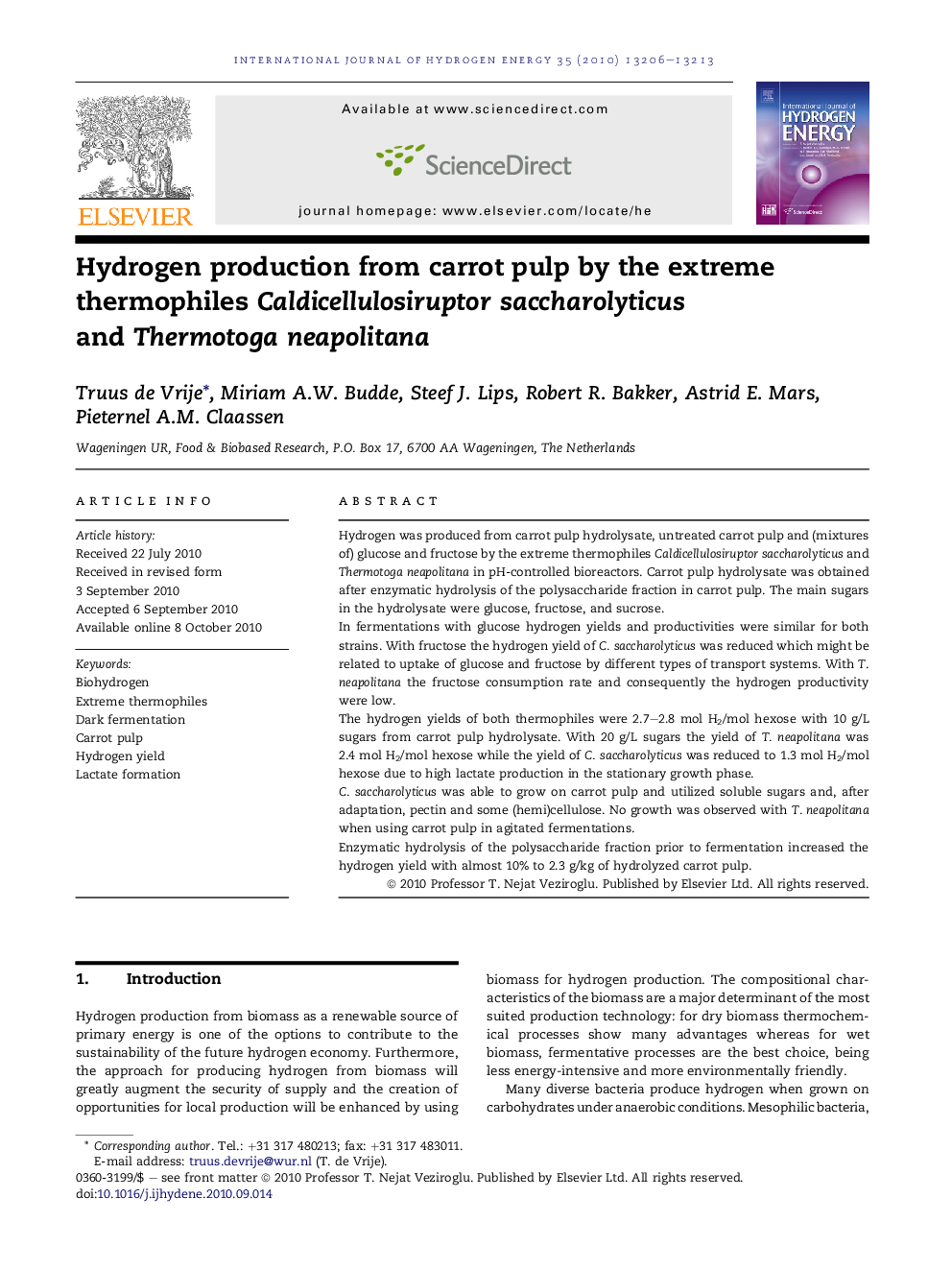| Article ID | Journal | Published Year | Pages | File Type |
|---|---|---|---|---|
| 1282681 | International Journal of Hydrogen Energy | 2010 | 8 Pages |
Hydrogen was produced from carrot pulp hydrolysate, untreated carrot pulp and (mixtures of) glucose and fructose by the extreme thermophiles Caldicellulosiruptor saccharolyticus and Thermotoga neapolitana in pH-controlled bioreactors. Carrot pulp hydrolysate was obtained after enzymatic hydrolysis of the polysaccharide fraction in carrot pulp. The main sugars in the hydrolysate were glucose, fructose, and sucrose.In fermentations with glucose hydrogen yields and productivities were similar for both strains. With fructose the hydrogen yield of C. saccharolyticus was reduced which might be related to uptake of glucose and fructose by different types of transport systems. With T. neapolitana the fructose consumption rate and consequently the hydrogen productivity were low.The hydrogen yields of both thermophiles were 2.7–2.8 mol H2/mol hexose with 10 g/L sugars from carrot pulp hydrolysate. With 20 g/L sugars the yield of T. neapolitana was 2.4 mol H2/mol hexose while the yield of C. saccharolyticus was reduced to 1.3 mol H2/mol hexose due to high lactate production in the stationary growth phase.C. saccharolyticus was able to grow on carrot pulp and utilized soluble sugars and, after adaptation, pectin and some (hemi)cellulose. No growth was observed with T. neapolitana when using carrot pulp in agitated fermentations.Enzymatic hydrolysis of the polysaccharide fraction prior to fermentation increased the hydrogen yield with almost 10% to 2.3 g/kg of hydrolyzed carrot pulp.
